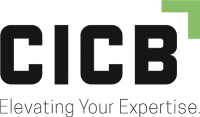
Training your employees how to use the equipment is important, but that should not be the only form of training provided. Teaching the controls and their functions is important, however, it is not all there is to be safe and effective training. That short process can be described as equipment familiarization. Formal training assesses the operator's comprehension of the information they were taught.
Training should consist of providing objective training regarding the following subjects:
- Applicable regulations and safety regulations
- Organizational policies and procedures
- The equipment manufacturer’s requirements for safe operation that is outlined in the machine’s operator’s manual
- Operator qualification
- Operator’s responsibilities and operating conduct
- The manufacturer’s requirements for pre-operational, during operation and after operation inspections
- The machine’s operating controls for functions and resultant motion
- Safe and effective operating techniques
- Hazard awareness in the operating environment
The training should be delivered by a qualified trainer, schooled in “Adult Learning Principles.” It definitely is a plus if the trainer has experience with the machines that the training is being taught. In order to complete the training the person being trained should pass a written examination to determine that the training objectives have been met. A practical operating evaluation should be administered to determine if the student can, in fact, operate the machine in a safe manner.
About The Author
 Larry Kime brings over two decades of experience to CICB, serving as a Senior Instructor/Inspector and Technical Advisor. A U.S. Air Force veteran, Larry has dedicated his career to promoting safety and compliance in the lifting industry. Known for his engaging teaching style and deep technical expertise, he is highly regarded by professionals across the field. Larry’s commitment to continuous learning and mentorship makes him a valued member of the CICB team.
Larry Kime brings over two decades of experience to CICB, serving as a Senior Instructor/Inspector and Technical Advisor. A U.S. Air Force veteran, Larry has dedicated his career to promoting safety and compliance in the lifting industry. Known for his engaging teaching style and deep technical expertise, he is highly regarded by professionals across the field. Larry’s commitment to continuous learning and mentorship makes him a valued member of the CICB team.





